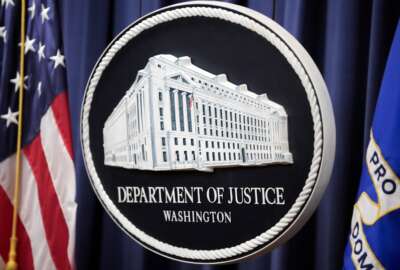Post-Chevron, White House’s OIRA ‘laser focused’ on strong rulemaking
In the wake of the Supreme Court decision, OIRA is also touting its efforts to reduce needlessly complicated paperwork and other burdens on the public.
The White House’s lead regulatory office is staying focused on the Biden administration’s rulemaking agenda in the wake of the Supreme Court’s Chevron decision, while also highlighting how agencies have reduced complicated paperwork and other barriers to accessing government programs.
The Office of Information and Regulatory Affairs (OIRA) released its 2024 “burden reduction” report earlier this month. It highlights dozens of initiatives from federal agencies to streamline public programs and reduce paperwork burdens.
The report’s release comes shortly after the Supreme Court in a 6-3 ruling overturned the “Chevron” deference that gave agencies more latitude in crafting regulations. The high court’s decision on Chevron and two other cases could redefine the extent to which agencies can interpret laws passed by Congress.
OIRA, meanwhile, serves as the focal point of executive branch rulemaking. Sitting within the Office of Management and Budget, OIRA maintains the semiannual regulatory agenda. It also reviews drafts of proposed and final regulations before agencies can implement them.
“We’re laser focused on making sure that we have the strongest rules possible to move forward with the administration’s priorities,” OIRA Associate Administrator Sam Berger said an interview late last week. “That they are fully grounded in law, existing authority, and that they also are designed to be as effective and efficient as possible. And so from that standpoint, we’re going to keep doing our work.”
Former agency and legal experts say agencies could soon see an uptick in legal challenges in a post-Chevron world. GOP lawmakers are also exploring ways to challenge the administrative state.
“To the extent that there are legal requirements that change, we obviously take that into account,” Berger said. “But what we need to be doing is making sure that we have the strongest regulations, that we’re doing the most that we can to be helping the American people, helping the economy continue to grow up, helping to keep people safe, helping keep our air water clean. And that’s where our focus is on. And that’s what we’re going to keep doing.”
Cutting the ‘time tax’
OIRA’s 2024 burden reduction report highlights 49 initiatives across 18 agencies aimed at reducing what it calls the “time tax” on the public. OIRA says those burdens include “needlessly complicated forms, requests for redundant detailed information, or confusing application processes.”
The report details, for instance, how the Department of Health and Human Services collaborated with the U.S. Digital Service and state agencies to streamline renewals for Medicaid and the Children’s Health Insurance Program.
It also points to how the IRS recently redesigned and simplified 31 taxpayer forms ahead of the 2024 filing season. By next year, the IRS plans to have redesigned 200 forms representing 90% of notices sent to taxpayers.
Berger said OIRA uses its responsibilities under the Paperwork Reduction Act to make sure government form is “as minimally burdensome as possible.” And the office can further engage with agencies on their programs through the rulemaking process.
“Sometimes there might be changes that could significantly reduce administrative burden while still accomplishing the goal of agencies,” Berger said.
OIRA is also pushing agencies to better engage the people who need to fill out forms or go through agency-mandated processes to access a program or service.
“Engaging with people, engaging with stakeholders, the folks that are on the ground using it,” Berger said. “The information about where these pain points are lies with them. And ultimately, what you need to understand is, when folks are going through your program, what are the issues that they encountered? What are things that maybe you didn’t expect? What are things that seems simple or clear to you, as you wrote it, that aren’t to them?”
‘Demystifying’ OIRA
OIRA’s report highlights the importance of agencies partnering with states that administer many public programs. Similarly, OIRA is also prioritizing efforts to align eligibility criteria across multiple programs. The report highlights as an example the Social Security Administration’s efforts to simplify its reporting requirements for supplemental security income recipients.
“From the state standpoint, if they’re administering a whole set of programs that they view as hitting the same target population, but it’s four different [federal] agencies that they’re dealing with, they have to get four different agencies in the room,” Berger said.
He highlighted his office’s “convening power” in bringing different federal and state agencies together, in addition to ORIA’s ability to review the “nitty gritty” details of proposed rules.
Meanwhile, Berger said leaders also want to “demystify” OIRA, known as a wonky, cloistered office where major agency initiatives are put to the test through the rulemaking process. He said OIRA recently held training sessions on its regulatory review process. It plans to hold another set of sessions on how to provide effective public comments.
“We really want to make sure that folks have a better understanding of what OIRA is, and what it is that we do,” Berger said. “And how they can get involved in every stage of the regulatory process, including with OIRA, but perhaps even more importantly, early engagement with agencies when they’re making critical decisions on priorities around how they’re going to shape the regulations.
Copyright © 2024 Federal News Network. All rights reserved. This website is not intended for users located within the European Economic Area.
Follow @jdoubledayWFED






